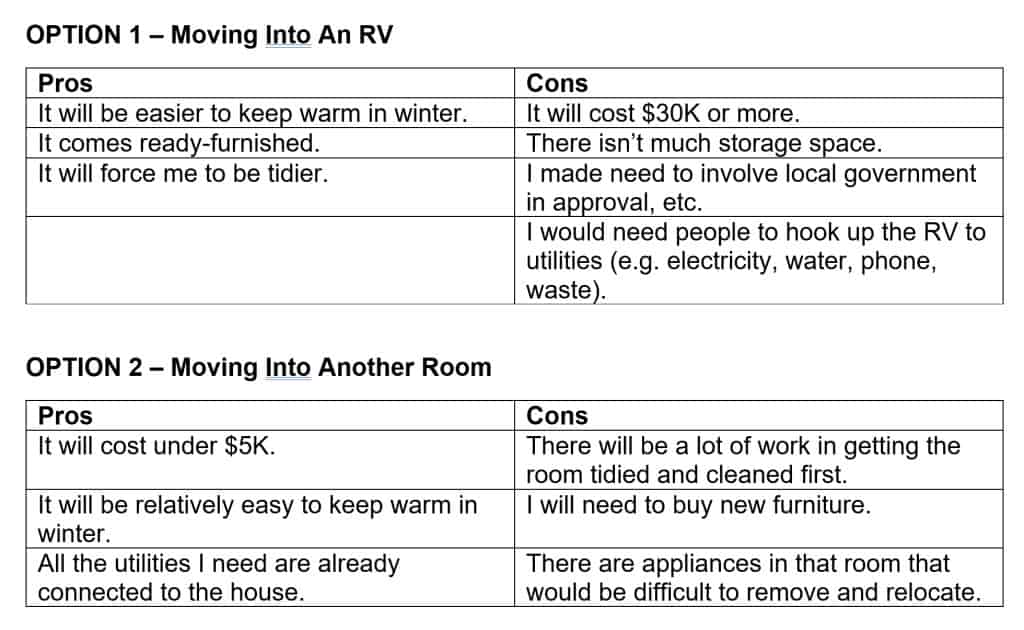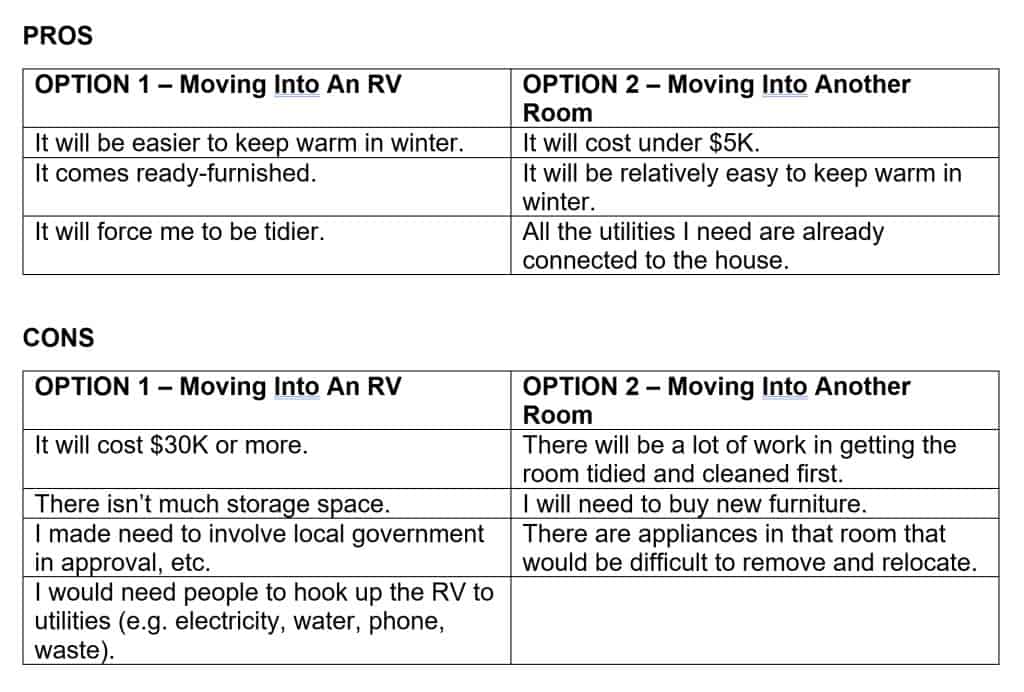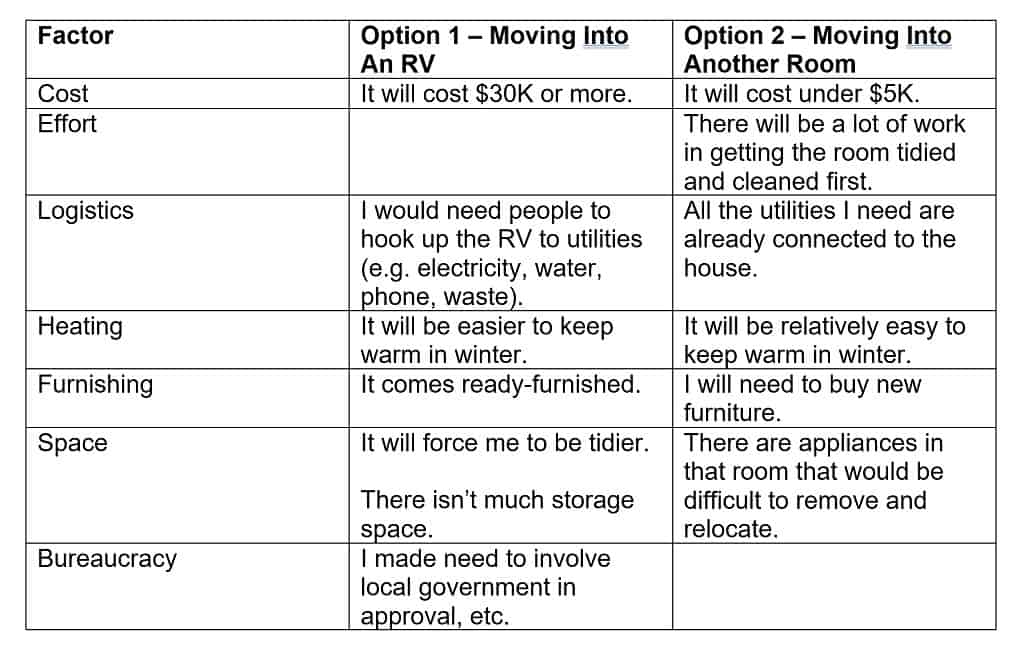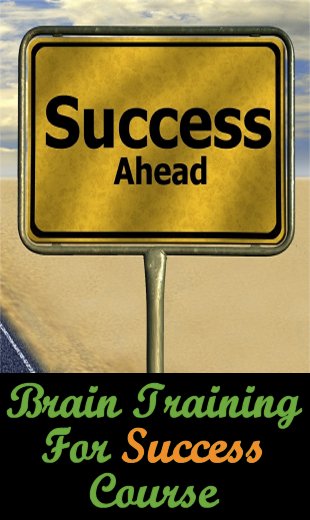The Pros And Cons Of Evaluating Pros And Cons
Many of us like to think that we make decisions rationally, using facts and logic, but the truth is, many (or even most?) of the decisions we make are based more on emotions and feelings.
For a species that prides itself on our superior brain power, it’s a difficult admission, but that doesn’t make it any less true.
Sometimes, of course, an emotional or gut-feel decision is fine – you don’t need to evaluate whether to have apple pie or peach pie for dessert, because you can simply go with what takes your fancy right then and there.
But more important decisions (e.g. which house to buy, which job to apply for, whether you should propose to your girlfriend, whether to have children) require more thought, because the consequences of making the wrong decision tend to be much more far-reaching.
With potentially life-changing decisions such as those, it’s often appropriate to weigh up the advantages / pros and disadvantages / cons of the various options you’re considering.
And that’s what this article will explore in more depth.
When Should You Compare Pros And Cons?
So, the first decision you need to make is whether it’s worth doing this comparison at all.
The main factor in that should be, what are the consequences of making the wrong choice?
In the case of deciding what to have for dessert, then food poisoning aside, the worst that will usually happen is that you don’t enjoy your dessert at much as you’d expected.
But when it comes to those larger decisions, there could be significant costs (both financially and metaphorically) if you make the wrong choice:
- You may end up in a house that is not best suited to your needs, which may result in making massive compromises in your living arrangements, or having to sell the house (possibly at a loss) so that you can then buy a more suitable one, with all of the additional expenses and effort that would incur.
- Applying for the wrong job (or the right job at the wrong company) could set you up for unhappiness or even depression, a dead end to your career, being made redundant (e.g. if you chose a company who go bankrupt), and more.
- Marrying the wrong person can cause major problems – unhappiness, stress, depression, maladjusted children, resentment, and, ultimately, the financial and emotional cost of divorce.
- Deciding to have children without thinking it through can affect not only your lives, but those of any children you have too.
There are, of course, many other possible consequences of making the wrong choice in the four examples above, but you get the idea.
As a general rule, then, the more severe the consequences of making a wrong choice, the more important it is to evaluate the pros and cons of the options you have available to you.
How To Evaluate Pros And Cons
OK, you’ve decided that you need to put more thought into you decision, because it’s an important one – but how do you go about it?
You have a few options here, so let’s start with the easiest one.
In some cases, there will be a number of factors that you know will affect your decision.
In the case of buying a home, these will likely include most of the following:
- Cost
- Location (e.g. compared to where you work, schools for your children, facilities, how much traffic and noise is there, is it in the town or in the country)
- Condition (e.g. can you move in immediately or does it require structural and/or decorative work)
- Features (e.g. does it have enough bedrooms, both for now and the foreseeable future, is there a garden, is there a garage that’s large enough for the number of cars you have or need)
- Neighbours (e.g. are there any, and if so, what are they like)
There are probably more, but if you have predefined a list of factors that are important to you (e.g. your budget is no more than a specified amount), then you may not need to do a full evaluation if one of your crucial criteria is not met.
If you saw a house you love but it’s five times your maximum budget, then you can cross it off your list immediately, with no further evaluation necessary.
Often, however, it won’t be that simple – you may, for example, have to choose between two (or more) similar houses, that meet all of your high-level criteria.
What then?
That’s when you can formally compare the pros and cons of each option, and there are a few ways you can do this.
For the following example, I’m going to use a real case study, which, while not complete, should be enough to let you see how the different ways of doing this comparison might work.
Over the past few months, I have been considering moving out of where I live now. (Although the house is theoretically large, a majority of the potentially available space is unusable, the house is extremely cold in winter and difficult to heat effectively, and for those reasons, I more or less live and sleep in a single room.)
I have been looking at lots of options (e.g. container homes, tiny houses), since I live on a 20-acre property with a ton of space to work with, but have narrowed my choices down to two – buying some sort of RV and living in that, or cleaning out and re-purposing one of the rooms that could be made suitable for living in.
So, the first way of evaluating pros and cons is to have separate sections for each option, with one column for the Pros and one for the Cons. This way of doing it would look something like this:
Again, remember that these do not represent all of the considerations.
This method allows you to see everything related to a single option in one place.
Simplistically, if the list of pros is longer than the list of cons for a given option, that may mean it’s a good choice, and vice versa.
However, while this may be a good way of weeding out options that aren’t as good as you first thought, it doesn’t easily let you compare different options.
A second way, then, is to have one section for the Pros and one for the Cons, with a column for each option, and that would look like this:
This method allows you to focus on all of the pros, and then all of the cons.
Using this format, you can easily see which option has more pros and more cons – although it’s not just a quantitative decision, because you need to assess the qualitative aspects too.
The third and final option that I have used in the past (both when I was working in IT and in my personal life), uses the factors that are important to you as the driver for the comparison – you have one row for each factor, and one column for each option, so that would look like this:
Using this format:
- You can more easily compare the different options’ pros and cons for each of the criteria you deem important.
- If you end up with blank cells, as you can see in the above example, it means you might have forgotten to consider the advantages or disadvantages of a particular option in respect to a certain factor. It may also, of course, mean that particular factor is irrelevant for that option (in which case you might write N/A in that box to show that you have considered it and decided it doesn’t matter).
- You can, if you wish, use colour-coding (or some other mechanism) to highlight the pros and the cons, since you’re writing them both in the same box.
- Another addition you can make to this format is to weight the factors depending on how important they are. For example, cost might be the most crucial factor, so you could either list that one first, with the least important being listed last, or you could add a new column called Weighting, and put a number in there, such as 1 for most important and 10 for least – whatever works for you).
Finally, remember that while I’ve only shown two options in the above examples, you may need to evaluate three or more, but the more options you have, the more time it will take and the more difficult the decision might end up being.
Who Should Do This Evaluation?
This depends, of course, on the situation.
Many decisions may affect only you, but others, such as whether to have children (and when), or which house to buy, likely affect other people too (e.g. your partner and/or your children).
As a general rule, then, anybody who is affected by the decision should have their say – within reason.
Firstly, different people may have differing views on what the factors are. For example, parents are going to be a lot more concerned about the cost of a new home than their children would be, whereas children might be more concerned about whether moving home would mean moving away from where their friends live.
Secondly, when weighing up the pros and cons of an option in relation to one of those factors, subjectivity may still come into it. Again, costs are fairly objective (i.e. a house is on the market for a listed value), even though people may not agree on what their budget is, but deciding how much work might be involved in moving into a certain house might elicit different perspectives from different people.
The Cons Of Evaluating Pros And Cons
While this approach to decision making is a valuable one, it’s not without its problems, of course, and one of the most common ones is that you end up with a large amount of information and data, and feel overwhelmed by it all – a condition that leads to something known as analysis paralysis.
On the plus side, that means you’ve probably considered all of the necessary factors and put a lot of thought into the process.
On the down side, you still have to try to make sense of all that information – and that is where weighting the factors can come in.
For example, if you are stuck between two options that appear equally good, you might take another look and decide that one of the factors where Option1 is strong is less important than another factor where Option 2 is strong, in which case you might conclude that Option 2 is, overall, the better one.
There’s one more thing to bear in mind too – this entire process may be iterative. In other words, you might need to go through this multiple times, fine-tuning your criteria and assessments each time.
But if the decision is large enough, then it’s better to spend time up front making sure you make the best one you can, than spending probably even more time (and money) fixing the consequences of a poor choice later on.
Conclusion
Doing a full evaluation of the pros and cons can be a time-consuming exercise, but if the decision is large enough, then it’s worth it when you take into account all of the potential costs of getting it wrong.
And none of this means that your gut feel is irrelevant – sometimes, after looking at all of the various advantages and disadvantages, you might decide there is no objective preference between House 1 and House 2, in which case going with your feelings is fine and maybe the only way forward.
To me, it’s always been important that major decisions are made for the right reasons, and this process helps you to do just that.
Having said that, I know that I am generally risk-averse, while others are much more willing, if not addicted, to taking risks, but at this stage in my life, I’m OK with that.
Additional Resources
These are suggestions for those who wish to delve deeper into any of the above:










